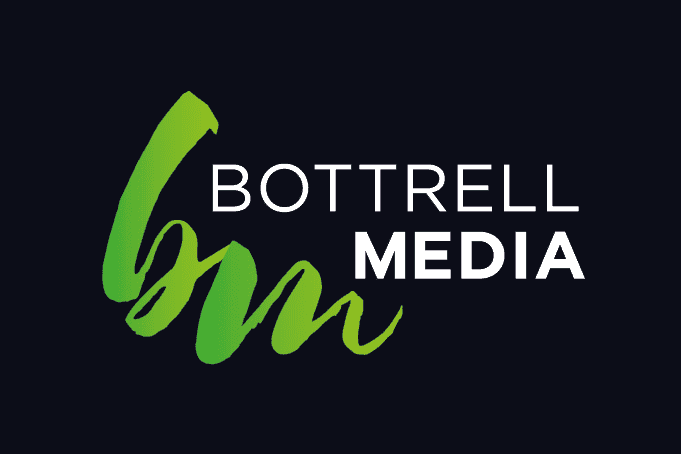
Web Design Checklist for Maitland Startups
In the fast-paced digital world, a strong online presence is crucial for the success of any startup, including those in Maitland. An appealing and well-designed website can help Maitland startups make a lasting impression on their target audience, drive conversions, and establish credibility.
To ensure your website delivers optimal results, it’s important to follow a comprehensive web design checklist. In this article, we will outline essential elements that Maitland startups should consider when designing their websites.
Define Your Target Audience:
Before diving into the design process, it’s essential to have a clear understanding of your target audience. Identify their preferences, needs, and expectations to tailor your website’s design and content accordingly. By aligning your design choices with your audience’s preferences, you can create a user-centric website that resonates with Maitland residents.
Develop a Clear Site Structure:
A well-organized site structure is crucial for a seamless user experience. Plan and design a logical navigation system that allows visitors to easily find the information they’re looking for. Consider the hierarchical structure of your content, ensuring important pages are easily accessible from the main menu. A clear and intuitive navigation system enhances user engagement and encourages exploration of your website.
Optimize for Mobile Devices:
With the majority of internet users accessing websites through mobile devices, it’s vital to ensure your website is fully responsive and optimized for mobile viewing. Test your website on various devices and screen sizes to ensure consistent and user-friendly experiences across different platforms. A mobile-friendly website not only improves user satisfaction but also helps with search engine rankings.
Craft Compelling Content:
Engaging and informative content is the backbone of any successful website. Create high-quality, relevant, and compelling content that showcases your Maitland startup’s unique value proposition. Incorporate effective headlines, concise paragraphs, and visually appealing multimedia elements to capture visitors’ attention. It’s important to include relevant keywords in your content to make it more visible to search engines.
Implement Strong Call-to-Actions (CTAs):
Every page of your website should have a clear and strategically placed call-to-action (CTA). Whether it’s encouraging visitors to sign up for a newsletter, request a demo, or make a purchase, well-designed CTAs guide users toward desired actions. Use contrasting colors, persuasive language, and prominent placement to make your CTAs stand out and increase conversion rates.
Optimize Page Load Speed:
In today’s fast-paced digital environment, users expect websites to load quickly. Websites that take a long time to load can cause a lot of visitors to leave and become frustrated. Improve your website’s performance by reducing file sizes, taking advantage of browser caching, and using content delivery networks (CDNs). Regularly monitor and analyze your website’s speed to ensure optimal performance.
Incorporate Visual Hierarchy:
Visual hierarchy is crucial for guiding users’ attention and conveying information effectively. Use typography, colors, and spacing to establish a clear visual hierarchy that highlights key elements, such as headlines, important messages, and calls-to-action. Properly implemented visual hierarchy enhances readability and improves user engagement.
Integrate Social Media Integration:
Social media plays a significant role in modern marketing strategies. Integrate social media icons and sharing buttons into your website design, allowing visitors to easily connect and share your content on various platforms. This integration promotes brand awareness, expands your reach, and encourages social engagement.
Ensure Cross-Browser Compatibility:
Different users may access your website using various browsers and devices. To ensure a consistent experience, test your website on multiple browsers, including popular ones like Chrome, Firefox, Safari, and Edge. Make necessary adjustments to ensure compatibility, so your Maitland startup’s website looks and functions seamlessly across different platforms.
Here’s a FAQ section for the web design checklist for Maitland startups:
Q1: Why is it important to have a clear site structure?
A1: A clear site structure ensures that visitors can easily navigate through your website and find the information they’re looking for. It enhances user experience, reduces bounce rates, and improves overall engagement with your website.
Q2: How can I ensure my website is mobile-friendly?
A2: To ensure your website is mobile-friendly, design it with a responsive layout that automatically adjusts to different screen sizes. Test your website on various devices and use tools like Google’s Mobile-Friendly Test to identify and fix any issues.
Q3: What makes compelling content for a website?
A3: Compelling website content is relevant, informative, and engaging. It should effectively communicate your Maitland startup’s value proposition, address users’ pain points, and showcase your expertise. Incorporate eye-catching visuals and use concise, persuasive language to captivate your audience.
Q4: Why are call-to-actions (CTAs) important?
A4: CTAs guide visitors to take desired actions on your website, such as signing up for a newsletter or making a purchase. Well-designed CTAs improve conversion rates and help you achieve your business goals. Make them visually prominent, use compelling language, and ensure they align with the visitor’s journey.
Q5: How can I optimize my website’s page load speed?
A5: Optimize page load speed by minimizing file sizes (compressing images, leveraging browser caching), using a content delivery network (CDN), and optimizing your website’s code. Regularly test your website’s speed and make improvements as needed.
Q6: What is a visual hierarchy, and why is it important?
A6: Visual hierarchy refers to the arrangement of elements on a web page to convey importance and guide user attention. By using typography, colors, and spacing effectively, you can highlight key elements, improve readability, and enhance user engagement.
Q7: Why should I integrate social media into my website?
A7: Integrating social media into your website allows visitors to connect with your Maitland startup on various platforms and share your content. This promotes brand awareness, expands your reach, and encourages social engagement, helping you connect with a wider audience.
Q8: How can I ensure cross-browser compatibility for my website?
A8: Test your website on multiple browsers (e.g., Chrome, Firefox, Safari, Edge) to ensure it looks and functions correctly across different platforms. Make necessary adjustments to address any compatibility issues that may arise.
Q9: Is it necessary to conduct testing before launching my website?
A9: Yes, thorough testing is essential to ensure your website functions as intended and delivers a seamless user experience. Test for responsiveness, functionality, compatibility, and performance to identify and resolve any issues before launching.
Q10: Are there any specific web design trends I should consider for Maitland startups?
A10: While web design trends evolve over time, it’s important to prioritize user experience, mobile optimization, and a clean, professional aesthetic. Stay updated with current design practices but focus on creating a website that effectively represents your Maitland startup and meets the needs of your target audience.
Contact us at @ Bottrell Media
93 Lawes St, East Maitland NSW 2323
P: 02 40275782
E: office@bottrellmedia.com.au
Socials & Links for Bottrell Media
Facebook – Bottrell Media Facebook Page
Instagram – Bottrell Media Instagram Page
Google – Bottrell Media Google
Helpful articles
The Value of User Experience in Website Design
How a focus on user experience leads to increased engagement, conversions, and customer satisfaction
Professional Services (Links)


